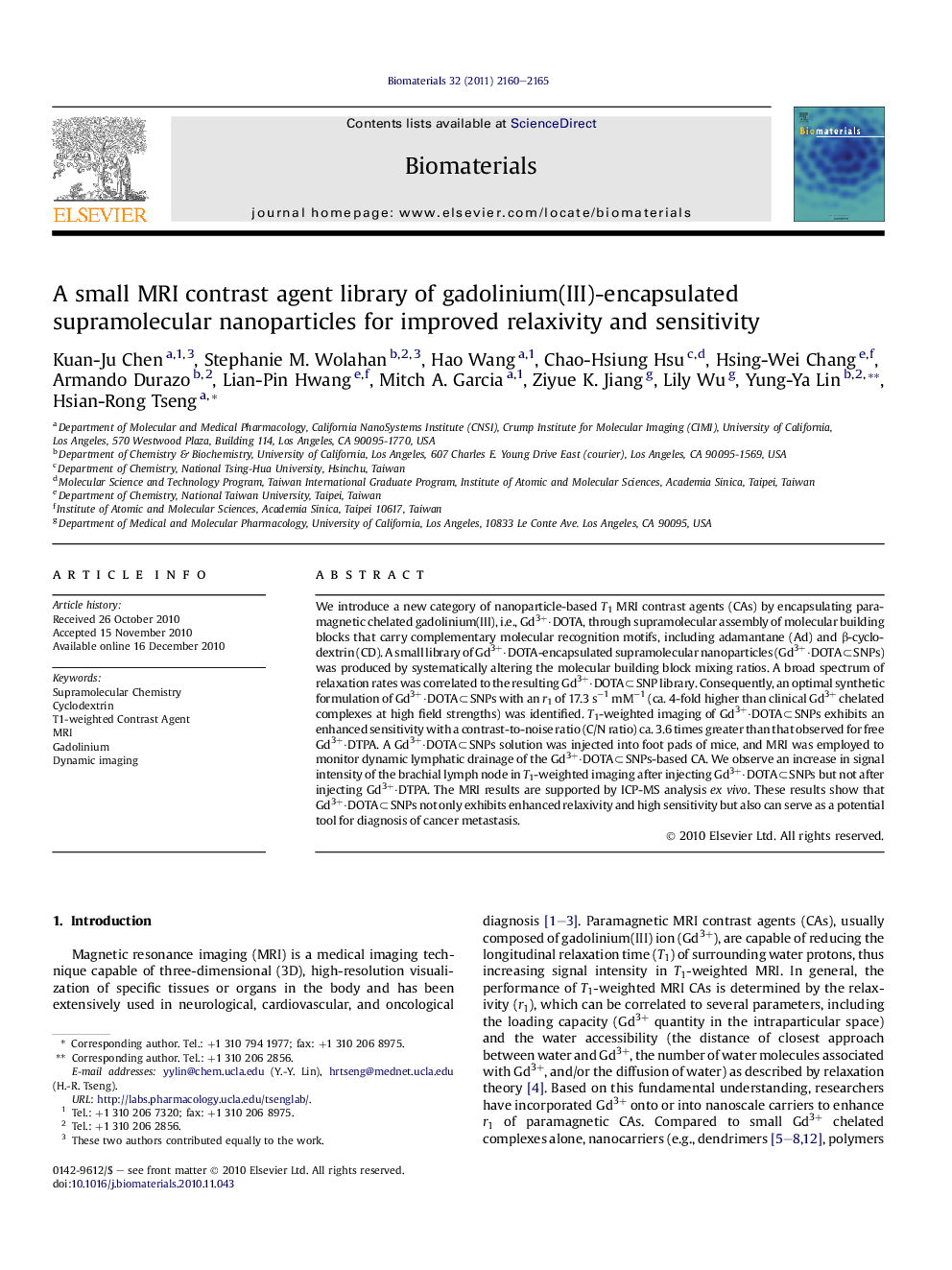| Article ID | Journal | Published Year | Pages | File Type |
|---|---|---|---|---|
| 10229947 | Biomaterials | 2011 | 6 Pages |
Abstract
We introduce a new category of nanoparticle-based T1 MRI contrast agents (CAs) by encapsulating paramagnetic chelated gadolinium(III), i.e., Gd3+·DOTA, through supramolecular assembly of molecular building blocks that carry complementary molecular recognition motifs, including adamantane (Ad) and β-cyclodextrin (CD). A small library of Gd3+·DOTA-encapsulated supramolecular nanoparticles (Gd3+·DOTAâSNPs) was produced by systematically altering the molecular building block mixing ratios. A broad spectrum of relaxation rates was correlated to the resulting Gd3+·DOTAâSNP library. Consequently, an optimal synthetic formulation of Gd3+·DOTAâSNPs with an r1 of 17.3 sâ1 mMâ1 (ca. 4-fold higher than clinical Gd3+ chelated complexes at high field strengths) was identified. T1-weighted imaging of Gd3+·DOTAâSNPs exhibits an enhanced sensitivity with a contrast-to-noise ratio (C/N ratio) ca. 3.6 times greater than that observed for free Gd3+·DTPA. A Gd3+·DOTAâSNPs solution was injected into foot pads of mice, and MRI was employed to monitor dynamic lymphatic drainage of the Gd3+·DOTAâSNPs-based CA. We observe an increase in signal intensity of the brachial lymph node in T1-weighted imaging after injecting Gd3+·DOTAâSNPs but not after injecting Gd3+·DTPA. The MRI results are supported by ICP-MS analysis ex vivo. These results show that Gd3+·DOTAâSNPs not only exhibits enhanced relaxivity and high sensitivity but also can serve as a potential tool for diagnosis of cancer metastasis.
Related Topics
Physical Sciences and Engineering
Chemical Engineering
Bioengineering
Authors
Kuan-Ju Chen, Stephanie M. Wolahan, Hao Wang, Chao-Hsiung Hsu, Hsing-Wei Chang, Armando Durazo, Lian-Pin Hwang, Mitch A. Garcia, Ziyue K. Jiang, Lily Wu, Yung-Ya Lin, Hsian-Rong Tseng,
